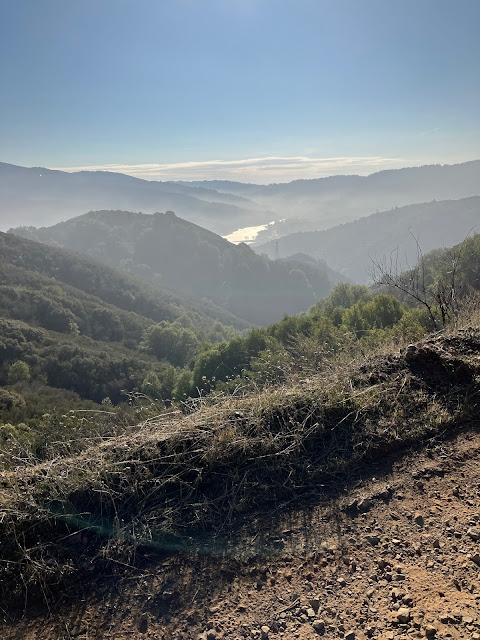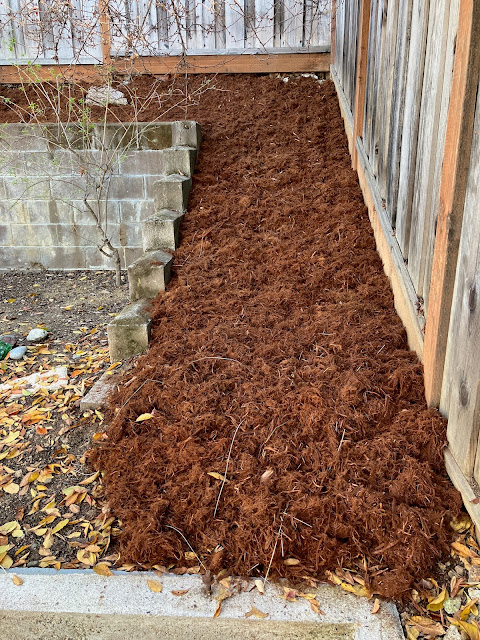When the previous owners ripped out most of the lawn in the yard, they laid down a layer of shredded redwood fiber mulch. This is a rather nice mulch material, as it tends to felt together and form a mat, rather than other styles of bark mulch that just remain loose and chunky forever.
However, over time it does compact and break down, and it was starting to look a bit shabby due to this.
It's rather obvious to see how much the mulch has shrunk and sunk down from the edges.
So naturally there's only one thing to do.
I ordered 7 yards of fresh new mulch to be delivered, which ended up being about $300 for the material and $200 for delivery.
Hmm, this kind of looks like more than 7 yards to me. Oh well, I'm sure the career professionals at the landscaping supply depot are trustworthy and reliable about core functions of their job like this.
Anyway, time to get things spread.
I started with the front yard, since it was literally right there.
This is definitely a huge improvement, and we made a decent dent in the mulch pile. About 3.5 yards worth, I'd say.
Funny though, it looks like there's more than 3.5 yards left.
Oh well, moving on to the back yard and the story is much the same, a huge improvement again.
Yes, this is looking so much better.
Anyway, I'd say I spread about 3 yards in the back, so that should leave us with around about half a yard of mulch still in the pile.
Hmm. Hmmmmmm. You know, it's been a while since I did my math degree, but this feels like more than half a yard to me.
Well, no bother, I'll just spread some out on this patch in the back that I had left bare.
Surprisingly, this didn't seem to make much of a dent on the remaining half yard of mulch. Luckily I had a few more spots I could fill in, like in front of the motorcycles.
And on the east side of the driveway.
And along the huge area behind the retaining wall in the back yard.
Even though I hadn't planned on filling this area in, it was nice to get a layer of mulch down on it. The slope here is pretty steep and the soil doesn't have much structure at all, so the mulch here should help keep the erosion down. Plus it looks nicer than the bare clay soil.
I'm pretty sure that the landscape company actually dropped off more like 10 yards of mulch given how much area it covered and based on my eyeballing the size of the pile. Luckily I had some extra yard I could spread it out over so it worked out pretty much perfectly in the end (though it was a lot more work than I had initially planned on).



























































